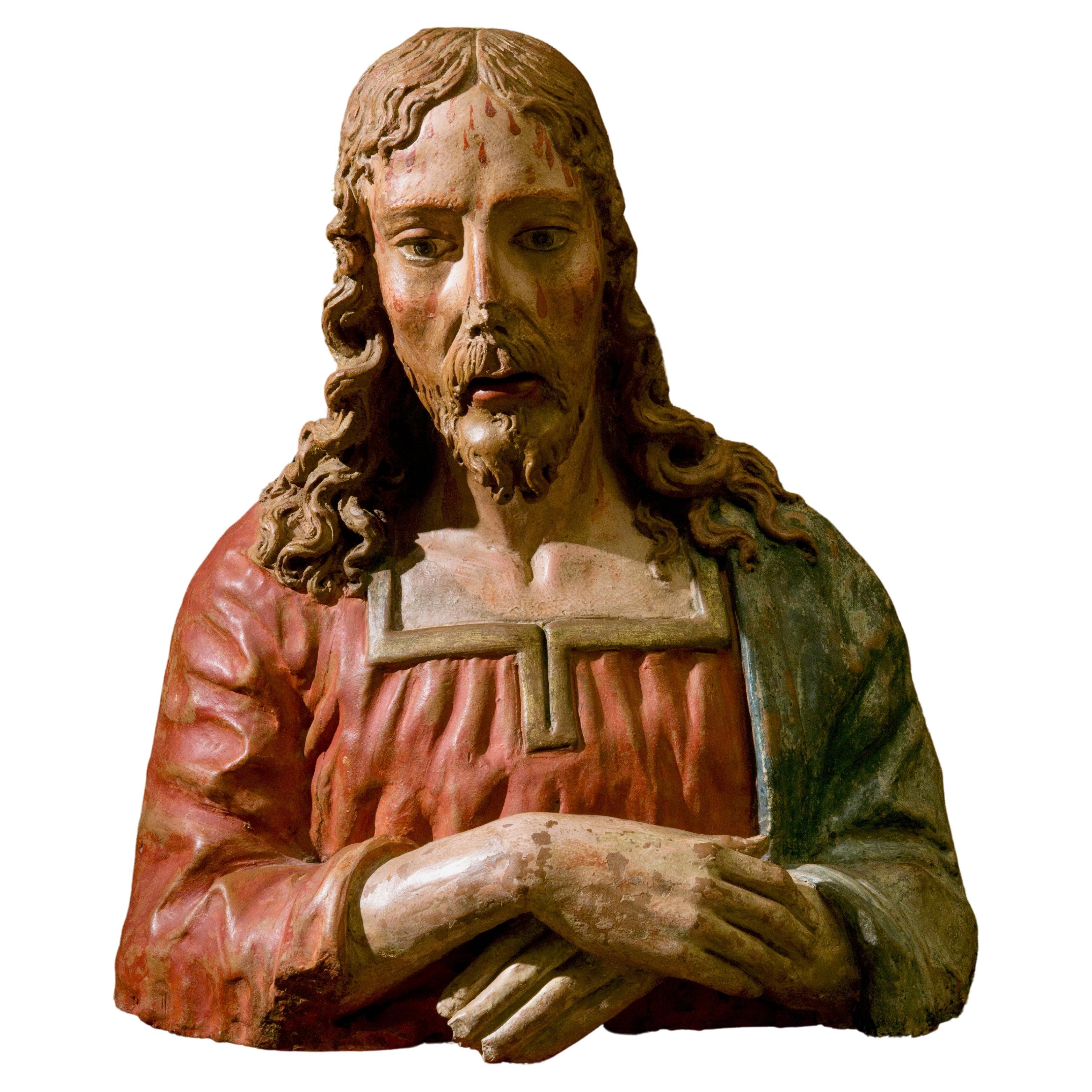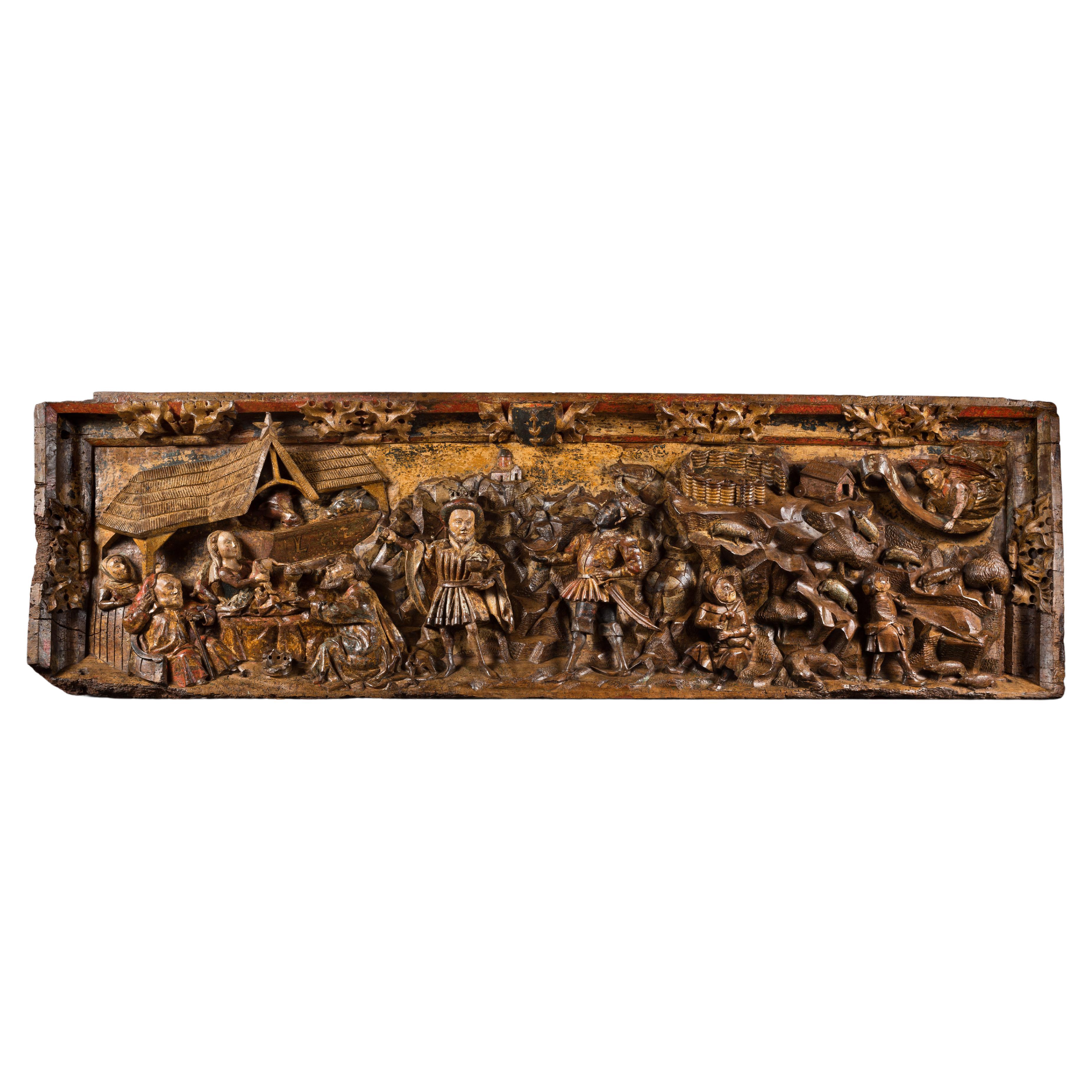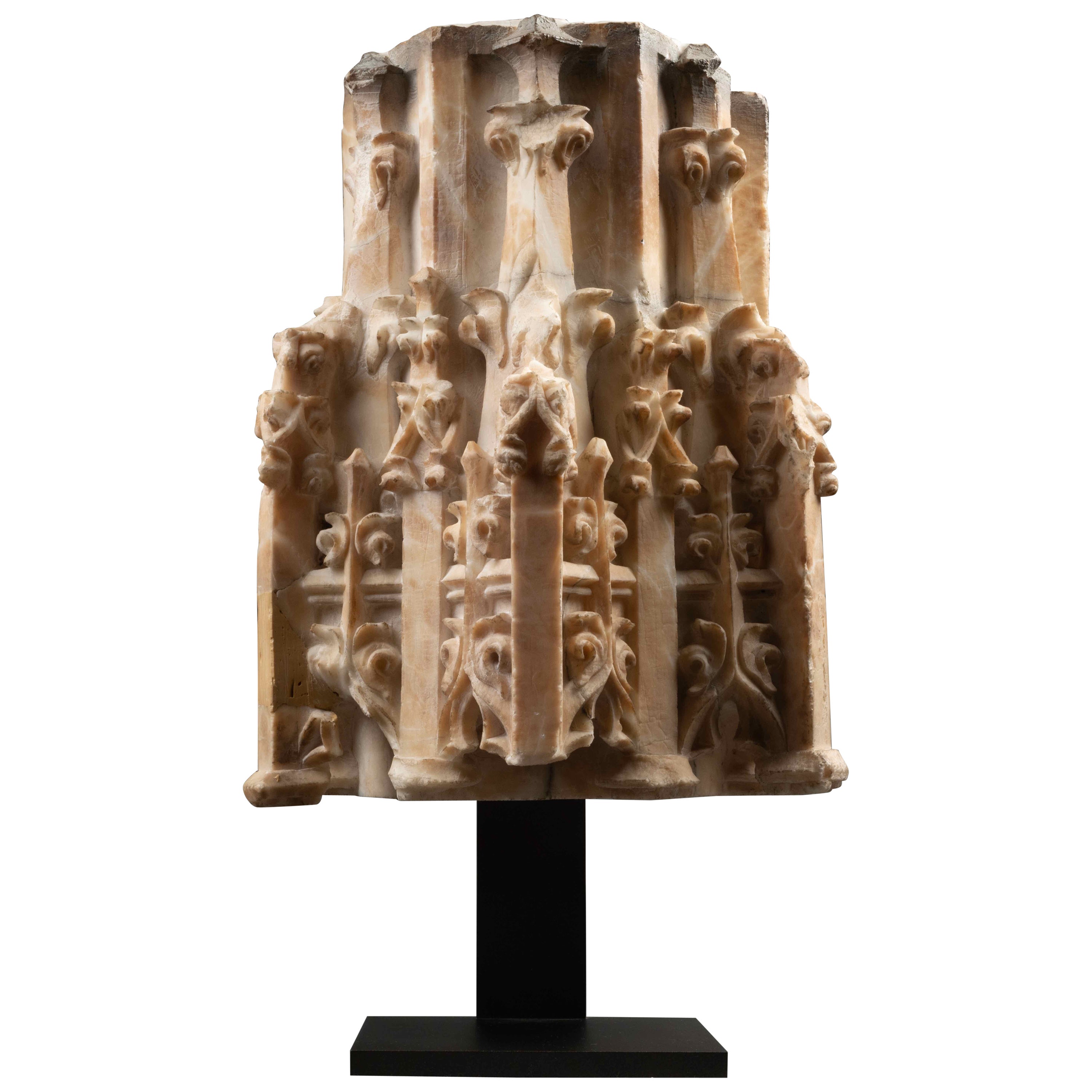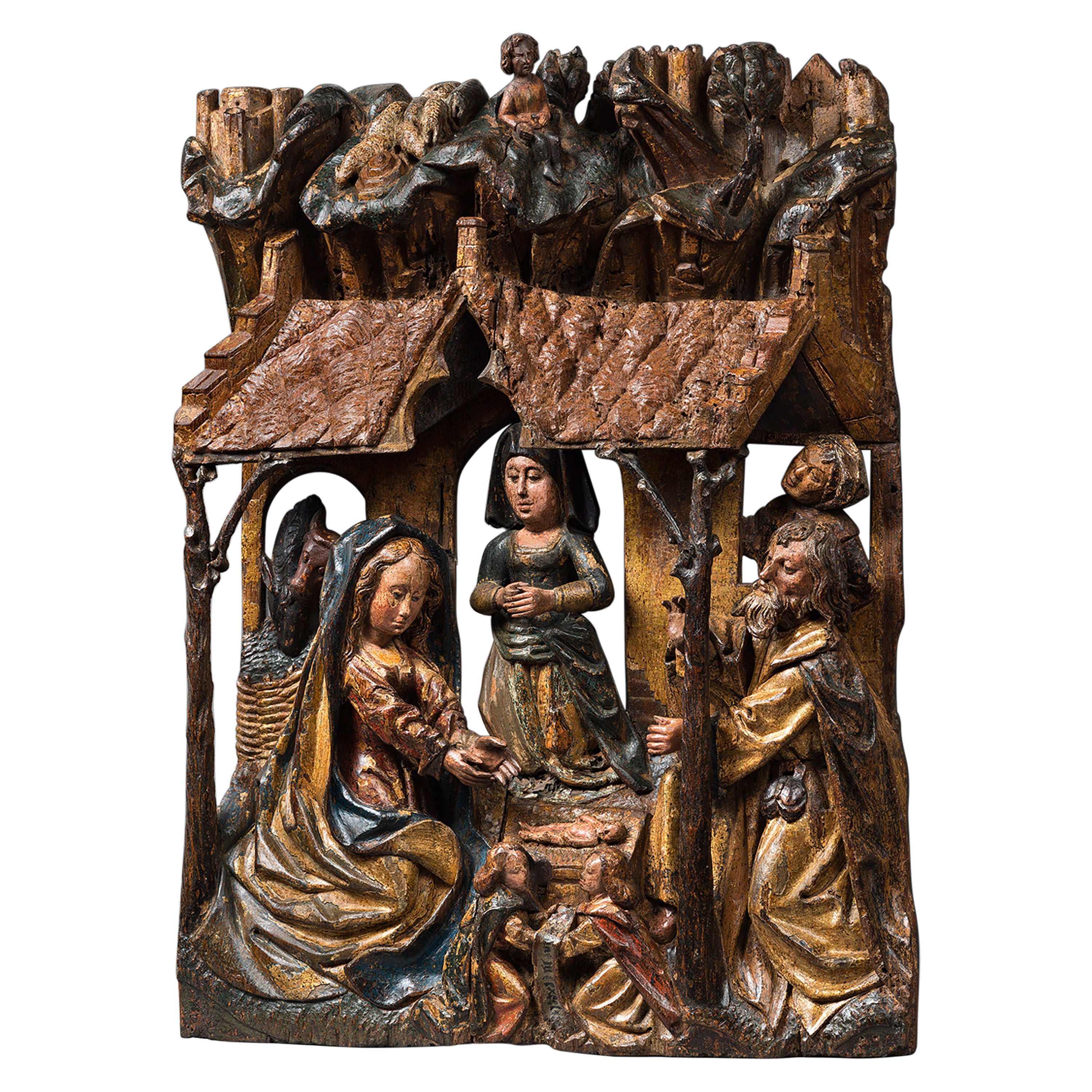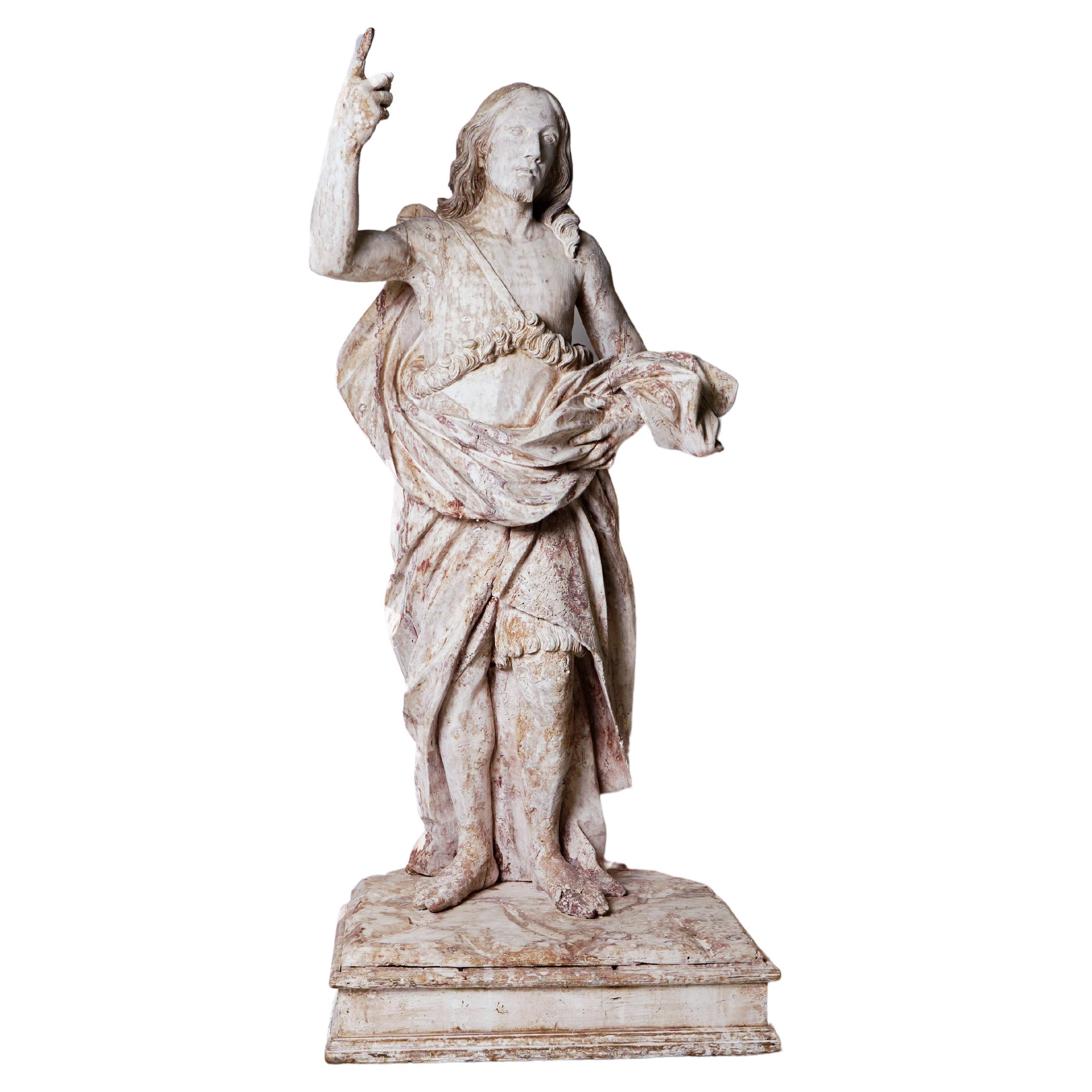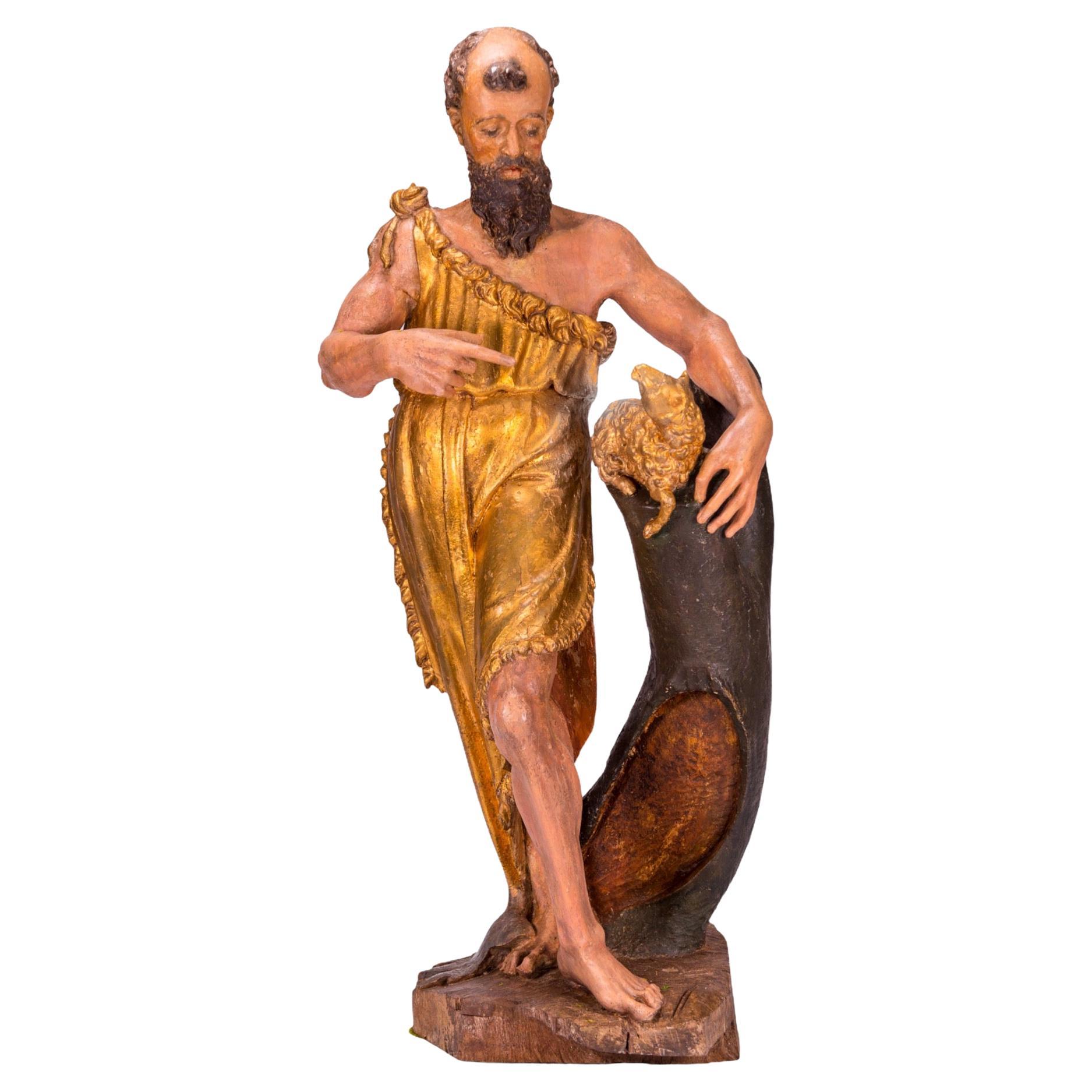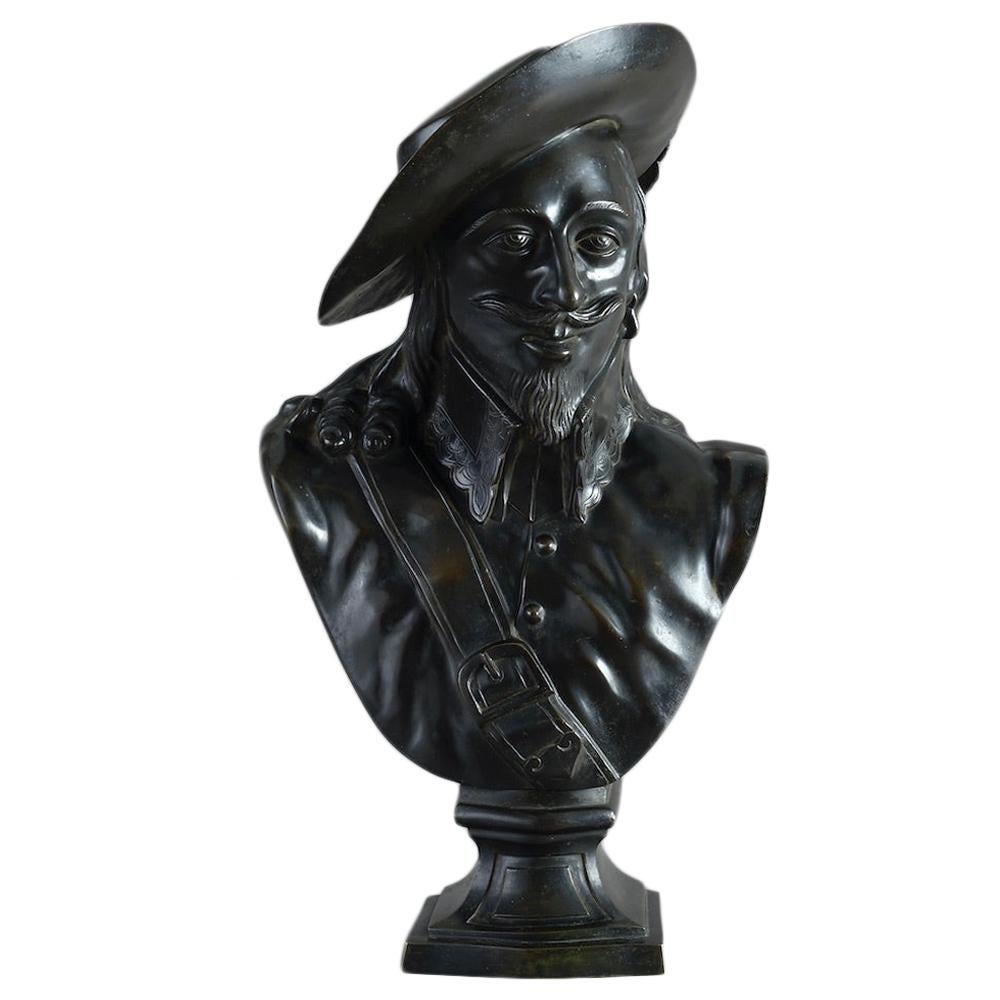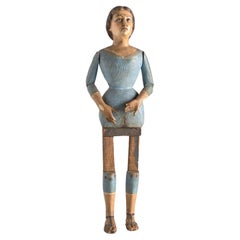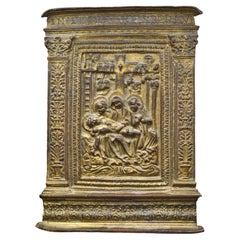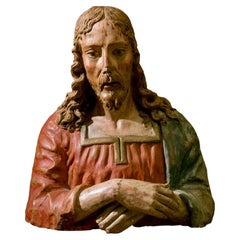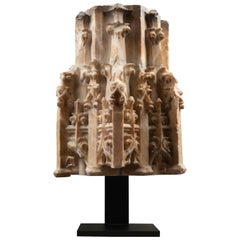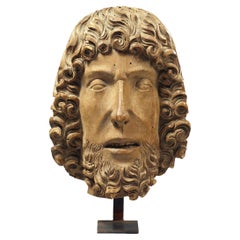
15th Century Wooden Bust of John the Baptist Attributed to Bernt Notke
View Similar Items
Want more images or videos?
Request additional images or videos from the seller
1 of 6
15th Century Wooden Bust of John the Baptist Attributed to Bernt Notke
About the Item
- Dimensions:Height: 9 in (22.86 cm)Width: 7 in (17.78 cm)Depth: 6 in (15.24 cm)
- Style:Gothic (Of the Period)
- Materials and Techniques:
- Place of Origin:
- Period:
- Date of Manufacture:Unknown
- Condition:Repaired: Minor replacements due to age and stress. Wear consistent with age and use.
- Seller Location:Leesburg, VA
- Reference Number:1stDibs: LU8166232882362
About the Seller
5.0
Vetted Seller
These experienced sellers undergo a comprehensive evaluation by our team of in-house experts.
Established in 2013
1stDibs seller since 2023
20 sales on 1stDibs
Typical response time: 6 hours
More From This SellerView All
- 19th Century Articulated Wooden Figure of the Virgin MaryLocated in Leesburg, VA19th century articulated wooden figure of the Virgin Mary Anonymous Spain; 19th century Polychrome wood, inset glass eyes Approximate size: 37 x 11 x 7 cm An antique ‘Virgin...Category
Antique 19th Century Primitive Figurative Sculptures
MaterialsGlass, Wood, Paint
$2,363 Sale Price24% Off - 15th century North Italian Gilt Bronze Pax of the LamentationLocated in Leesburg, VAAnonymous Second half of the 15th century; Northern Italy, possibly Milan Gilt bronze Approximate size: 17.2 x 13 cm The present pax probably derives from a finer original realized in more precious materials. For example, the vigor of its central motif is carved in such a way as to suggest the original artwork was conceived in carved stone or perhaps mother-of-pearl. The intricacy of its frame suggests a separate master adept in silverwork. Overall, this bronze pax...Category
Antique 15th Century and Earlier Italian Renaissance Religious Items
MaterialsBronze
- 15th century Gilt Bronze Pax of the Virgin and Child, after DonatelloLocated in Leesburg, VAAnonymous, school of Donatello Second half of the 15th century; Northern Italy Approximate size: 13 x 7.6 cm The present relief of the Virgin and Child is largely considered derive...Category
Antique 15th Century and Earlier Italian Renaissance Religious Items
MaterialsBronze
- Antique Hand-Carved Architectural Wooden and White Polychrome Floral CarvingLocated in Leesburg, VAAntique Hand-Carved Architectural Wooden and White Polychrome Floral Carving Anonymous Probably South Asia; mid-20th century Wood Approximate size: 12.8 x 2.28 x 6.8 in. A South A...Category
Mid-20th Century Rustic Mounted Objects
MaterialsWood
- Antique Hand-Carved Architectural Wooden Floral Motif Panel with White PolychromLocated in Leesburg, VAAntique Hand-Carved Architectural Wooden Floral Motif Panel with White Polychrome Anonymous Probably South Asia; mid-20th century Wood Approximate size: 9.8 x 2 x 6.4 in. A South ...Category
Mid-20th Century Indian Bohemian Mounted Objects
MaterialsWood
- An antique 18th century Walnut European Santos - Saint figure on a plinthLocated in Leesburg, VAAn antique 18th century Walnut Figural Statue of Saint Peter on a plinth Anonymous Northern Europe, probably Belgium; first-half of the 18th century Walnut Approximate size: 17 (h) x 4.25 (w) x 4.25 (d) in. The present sculpture, perfectly suited for a curiosity cabinet or English-European country styled home, was likely realized for a church side chapel or choir stall niche. The serious look of the saint’s face...Category
Antique Early 18th Century Belgian Baroque Figurative Sculptures
MaterialsWalnut
You May Also Like
- Terracotta Bust of Christ as the Redeemer, 15th CenturyLocated in Bruxelles, BEA terracotta bust of Christ as The Redeemer Tuscany or Emilia Romagna, late 15th century Measures: 46 x 43 x 21 cm This powerful, moving bust of...Category
Antique 15th Century and Earlier Italian Renaissance Figurative Sculptures
MaterialsTerracotta
$13,849 Sale Price30% Off - 15th Century Burgundian Low-Relief Depicting Scenes of the NativityLocated in Saint-Ouen, FRProvenance : In the same private collection for several generations, Burgundy. The canonical Gospels describe briefly the episode of the Nativity. It comprises three parts : • The Preludes : the Journey to Bethlehem, the Census • The Nativity • The Announce to the Shepherds and the Adoration of the Magi Only the Gospel according to Matthew (2, 1-12) speaks about the Adoration of the Magi. Staying vague about their number it does say they brought the newborn gold, incense and myrrh. The apocryphals, the fathers of the Church and many other authors have filled in the gaps of the evangelic tale. The sobriety and symbolic of the story have been a huge inspiration to artists. Although one of the oldest depictions of the Adoration of the Magi dates from the 2nd century the theme became very popular in Christian art during the late 14th century. One of the reasons explaining this success is that it celebrates both the Virgin and Christ at the same time. This important walnut panel is carved in a strong relief and depicts the different steps of the story of Jesus’ birth. On the left, the donkey and ox that have accompanied Mary and Joseph from Bethlehem are depicted behind a trough. On the thatch roof appears the star that would guide the magi to the place of birth of Jesus. Mary is wearing a veil and is seating on a bed. She holds her baby at arm’s length to present him to the magi. Saint Joseph is by her side. The old man is holding a cane in his left hand while from the right hand he seems to uncover himself to greet the visitors. A woman assists to the scene. In front of the holy family the three magi stand behind one another to pay their homage to the newborn. The first magi has a pointed beard. He is already kneeling out of deference and has placed his crown to his feet. He gives the baby a hanap filled with gold coins. This is Melchior as the legend describes him with white hair and a long beard. Caspar, the second magi bears a cup of incense. He is looking at the third magi and with his right hand he points to the star that has guided them there. He has a short beard and wears crakow shoes, breeches and a wide sleeved doublet. Finally Balthazar, the elegant last magi proceeds proudly towards the holy family with his one hand on the saber’s hilt and the other holding a cup. He brings the divine child the myrrh. He probably just dismounted as the horse can be seen behind him. The scene is set in a very detailed and narrative decor. In the right part of the panel the shepherd receive the announce of Jesus’ birth. An angel comes down from heaven with a scroll bearing the good news in his hands. The herding dog sleeps peacefully while sheeps graze. At the top of the cliff we notice the gilded sheeps enclosure. The panel’s moulded frame is carved with a foliated decor. In it’s centre appears a coat-of-arms. It is the alliance of the three magi’s arms. Indeed as it was common for legendary figures the three of them received imaginaries coat-of-arms. Thus, on a field of azure stands a star for Melchior, a crescent for Caspar and a pennon for Balthazar. This high-relief panel is undeniably the work of a very skilled and imaginative artist. This key moment in the New Testament is transposed to a contemporary environment thanks to the figures’ clothing and the rural daily life scene. This way the universal dimension of the episode is highlighted allowing a better understanding for the contemporaries. The sculptor has represented the episodes of the Adoration of the Magi and the Announce to the Shepherd with great talent and numerous details giving life to a picturesque and narrative scene. The important traces of polychromy give those already very animated scenes a stronger pictorial power and a rich dynamism. Because of the picturesque and familiar realism so dear to the artists of the late Medieval era, of the didactic function of this type of panel as well as the quality of the sculpture this piece is an astounding example of Burgundian art of the 15th century. Literature Louis Réau, Iconographie de l’Art chrétien...Category
Antique 15th Century and Earlier French Gothic Figurative Sculptures
MaterialsWalnut
- Gothic Canopy, France, 15th CenturyLocated in Bruxelles, BEGothic canopy France, 15th century Alabaster, some traces of polychromy 33 x 23 x 20 cm Provenance: - Private collection Genève, Switzerland ...Category
Antique 15th Century and Earlier French Gothic Figurative Sculptures
MaterialsAlabaster
- Wood Sculpture Depicting John the BaptistLocated in Saint-Ouen, FRThis wood scultpure showing fine traces of polychromy depicts John the Baptist, one the Old Testament’s last prophets and the first martyr of the New Testament. He is easily recognizable with the lamb he is carrying in his left hand. The way the artist has carved the face exudes a spiritual strenght inherited from previous centuries. Description Saint John the Baptist is depicted bare feet, seated in a hieratic manner. His elongated face is marked by a beard and a moustache. The straight nose and wide eyes indicate a Spanish origin. This asumption is reaffirmed by the Saint’s resigned expression. His parted hair frames his face while uncovering his ears. He wears a round collar red-orange tunic, draped onto the body and belted at the waist. A flap of his green coat covers his knees and falls down in stylized pleats. Following iconographic rules Saint John the Baptist is pointing with his right hand the lamb seated...Category
Antique 15th Century and Earlier Spanish Gothic Figurative Sculptures
MaterialsWood
- Late 15th Century Polychrome Wood Carving Depicting the NativityLocated in Saint-Ouen, FRWhile the birth of Christ is briefly told in the Gospel of Luke (2, 7) it is in the apocryphal texts that we find most of the elements and details that have then inspired artists. As of the 14th century and even more of the 15th century the subject of the Adoration of the Child replaces in Western art the scene of the Birth, much favoured in Byzantine art. Instead of being depicted lying with the new-born swathed in the manger, the Virgin is now kneeling, her hands joined in prayer in front of the naked child. This change was probably hastened by the popularity of the visions of Saint Bridget of Sweden to whom the Virgin allegedly appeared to show how she had given birth to Jesus (Visions, VII, chap. 21). Sheltered by a thatch-roofed structure the Virgin is kneeling in front of the Child Jesus. She wears a magnificent red dress under a large gold cloak. Her curled blond hair is partially veiled. The newborn is lying on a straw mat. Joseph is depicted with a parted beard and stands opposite from the Virgin. He wears a tunic and a coat with a purse hanging from the belt. His costume reminds us of the long journey him and Mary have accomplished to reach Bethlehem. Two other women are present. One is looking through the stable’s window to observe the Holy Family while another one kneels in prayer in front of the divine child. The rich costume of the lady might indicate she is a donator. However they could also both represent the women who took part in the birth of Christ, Zelemi and Salome. Salome, incredulous did not believe in the virginal conception of Mary and she is represented far from the scene. The artist has depicted her with an expression of doubt on her face. Zelemi, on the contrary, is a believer. She is rewarded by a place of honour at the heart of the scene, close to Mary. To the left the donkey and ox that have accompanied Mary and Joseph to Bethlehem observe quietly the scene. On the foreground two angels hold a scroll reading an excerpt from the Gloria : “/Gloria/ in excelsis /Deo/.” One of the angels wears a blue cape while the other’s is red Those two colours are very significant as during Middle-Ages blue symbolises hope and red charity. Together they express the hope in redemption thanks to the advent of Christ and his sacrifice to come. Above the main scene, up a cliff, a small shepherd lets his herd of sheep graze amidst the trees. He is framed by two walled cities. This wood carving is the work of a very skilled and inventive artist. The piece bears witness to his exceptional talent. The realism of the scene is emphasised by the amount of details depicted. The refinement of the carving itself is highlighted by the well preserved polychromy. This key moment of the New Testament is set in a contemporary context thanks to the clothes of the characters and the scenes of rural life. The universal dimension of the scene is intensified while allowing contemporary viewers to grasp its meaning more easily. This care for details, the picturesque realism as well as the extraordinary rendition of the cloths suggest it was made by a Flemish artist during the late 15th century. This relief can be compared with the panel of the Nativity from the Saint-Vaast altarpiece made by Jacques Daret between 1433 and 1435, today in Madrid’s Thyssen-Bronemisza Museum. Literature Louis Réau, Iconographie de l’Art chrétien...Category
Antique 15th Century and Earlier Dutch Gothic Figurative Sculptures
MaterialsWood
- San Antonio Abad, Spanish School of the 15th Century '1440-1501'By Europa AntiquesLocated in Madrid, ESSan Antonio Abad, Castilian school of the 15th century (1440-1501) Carving in polychrome wood, measures: 45 x 15 cm good vintage conditions.Category
Antique 15th Century and Earlier Spanish Gothic Figurative Sculptures
MaterialsWood
$3,253 Sale Price20% Off
Recently Viewed
View AllMore Ways To Browse
Antique To Modern Furniture
Wooden Forms
15th Wood
Wooden Round Frames
Used Furniture St Johns
Uniform Objects
Antique Long Johns
Antique Produce Scales
Antique Produce Scale
Wooden Painted Heads
Wooden Relief
Antique Wooden Figures
Antique Furniture St Johns
Old Wooden Sculpture
Small Bust Head
The Departed
Carved Wooden Figures
Short Wood Stand
